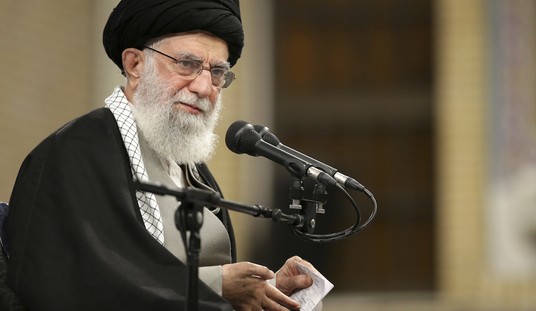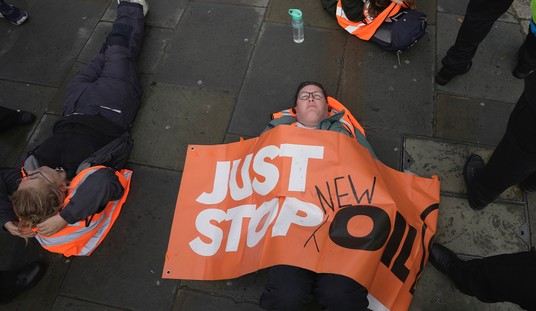The people who stood by and watched a woman get raped on a Philadelphia-area train should certainly face moral judgement for their apathy. Police now warn that they could face criminal prosecution as well. After reviewing surveillance video, investigators not only are sure that the bystanders saw the attack, some of them appeared to have been actively recording it on their cell phones:
The passengers who did nothing while a homeless man raped a woman on a commuter train outside Philadelphia may have also recorded the vile attack on their cellphones instead of calling for help, authorities said.
Surveillance footage showed Fiston Ngoy, 35, who has been charged with rape in Wednesday’s sickening attack aboard a Southeastern Pennsylvania Transportation Authority train, spent nearly 45 minutes harassing the woman and touched her breast at one point, according to an arrest affidavit obtained by the Philadelphia Inquirer.
Police said the rape then lasted about six minutes as other passengers looked on while holding their cellphones, but didn’t use the devices to call 911, SEPTA’s police chief said Monday.
The BBC also reported on the new direction taken by police, who have Ngoy dead to rights already on the rape. At the very least, they will want to see any other video taken by bystanders to understand the dynamic involved. They also might want to impress on SEPTA riders the necessity of protecting one another, but that may be a reach in any sense other than just a public scolding:
It is unclear how many other passengers were in the train car when the incident took place.
Investigators are also looking into whether some bystanders filmed the assault as it was taking place. …
Timothy Bernhardt, superintendent of the Upper Darby Police Department, was quoted by the New York Times as saying that bystanders who failed to help could face criminal charges if they recorded the incident.
A final decision on potential criminal charges, he said, will rest with the Delaware County district attorney’s office once it completes an investigation.
While Mr Bernhardt did not specify what charges witnesses could face, he said it would be “very difficult to bring charges against those” who saw the attack but did not help.
Prosecuting bystanders, even those who filmed the attack, would likely be a heavy lift. There’s no law against filming in public spaces, a point that police officers sometimes forget when people film them on the job. At least for now, Pennsylvania doesn’t have a Good Samaritan law that mandates reporting when violent crimes are witnessed. Even if they did, it would still be tough to prosecute; every defendant could say that they thought someone else had called 911, for instance.
However, precedent does exist for such a prosecution, even if it might be a stretch. The Big Dan’s rape case in New Bedford, Massachusetts in 1983 involved the prosecution of four participants in the rape, as well as two other men who encouraged the four to rape Cheryl Araujo. Prosecutors tied them to the rape as part of a “joint enterprise” or conspiracy. The two men got acquitted by a jury, in part because of brutal handling of the victim by defense attorneys, and none of the four rapists served more than seven years in prison. The case touched off a national debate over victim-blaming in rape trials, and inspired the film The Accused, starring Jodie Foster and Kelly McGillis.
The Big Dan’s prosecution theory in charging the two other men could be applied here. One could argue that the efforts to film the attack for the entertainment of the non-intervening bystanders puts them in the same “joint enterprise” territory. That might be especially true if the audio from those recordings shows bystanders encouraging the attacker or making comments that could be construed as approval.
That would still be a stretch, but those who find themselves in that position at the moment should be very worried about the potential, no matter how small it might be. It might be better to cooperate now and hope to gain some small amount of redemption and honor. Best of luck, however, in defending themselves against any civil action the victim might bring to the videotapers. If I sat on that jury, well … how many zeroes are there in a billion?
In the meantime, the lesson here is if you see something, say something. Call 911 or use the call boxes SEPTA has on the trains, for crying out loud. Don’t just treat it as your latest social-media influencer opportunity. Sheesh.








Join the conversation as a VIP Member